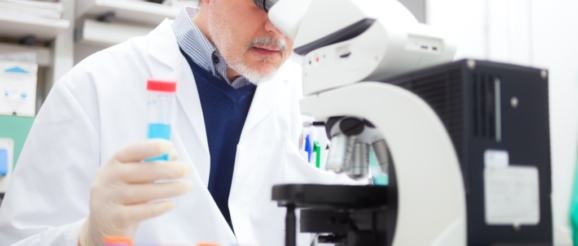COVID-19 Drives Innovation, Changing the Future of Patents

COVID-19 Drives Innovation, Changing the Future of Patents
Authored by: Parrish Nordan, Patent Attorney and Owner of Nordan Licensing
The global pandemic of COVID-19 has changed our world forever; the effects of this disease have been devastating, but it’s not all bad. With the toll COVID-19 has taken on the world, people have been creating innovative ways to stop the spread, and even cure, the virus – leading to new inventions every day. This growing number of innovative solutions brings an equally growing number of patent applications, especially in the biotechnology and biopharmaceutical fields.
This surmounting number of patent applications brought the USPTO front and center in media coverage and public pressure, especially when it comes to hangups in fighting the virus. Most recently, Gilead and the USPTO were under scrutiny when Gilead’s patented drug, , was facing extreme shortages throughout COVID-19 hot spots. Remdesivir helps people hospitalized with COVID-19 recover more quickly, freeing up hospital beds for incoming patients. It was seen as so critical for COVID-19 treatment that it was granted earlier this year.
The good: remdesivir was being produced as quickly as Gilead could make it. The bad: Gilead couldn’t produce or distribute enough to keep up with the demand. This is when pressure on the USPTO started – many people speculated that the remdesivir shortages would not have happened if Gilead’s patent was subject to . Pressure mounted to such a point that dozens of asking for the government to go around Gilead’s patent, enabling more businesses to produce remdesivir.
The USPTO didn’t jump on the compulsory licensing idea, but they did launch two new pilot programs to facilitate the patent review and licensing processes for patent applications related to COVID-19: and . Both programs are greatly beneficial for inventors and companies looking to file or license patents that can potentially help fight COVID-19.
COVID-19 PRIORITIZED EXAMINATION PILOT PROGRAM
If you’re thinking about filing a patent related to COVID-19, do not wait. The COVID-19 Prioritized Examination Pilot Program is accepting up to 500 applications (potentially more in the future) from small or micro entities. You could get a final disposition from the USPTO within , more than a year sooner than other patent applications.
As an extra incentive for the program, the USPTO waived the typical expedited program fees. Not only will you hear sooner about your patent application, but you can also apply using a more cost-effective program. It truly is a win-win for patent applications in fields like biotechnology that evolve so quickly that the USPTO doesn’t always keep up.
PATENTS 4 PARTNERSHIPS PLATFORM
One of the issues the remdesivir shortage highlighted was the need for easier collaboration between patent holders and companies looking to license and purchase patents. If it were easier to buy the rights to use a patent, more companies could develop innovative solutions to combat COVID-19. That’s why the (P4P) platform was launched in May 2020.
The P4P is intended to bring the people with ideas together with the companies that can turn those ideas into solutions available for mass production to the public. And so far, that intent has been achieved. The USPTO’s Official Gazette (the other way the office announced patents available for licensing) had listed in the months leading up to the P4P launch. As of September 2020, there are more than 800 patents listed in the P4P platform.
As of now, the P4P platform focuses on , but it could expand if the demand for the IP marketplace continues. If you currently hold a patent that could help diagnose, treat, or cure COVID-19, you now have a growing number of potential buyers thanks to the P4P platform.
HOW THE INNOVATION BOOM AFFECTS THE FUTURE OF PATENTS
Although COVID-19 and these specific pilot programs are new, this isn’t the first time the . When SARS spread in 2002, patents from around the world were filed with the intent to develop innovative solutions to diagnose, treat, and stop the spread of the disease. These innovation booms pushed global patent offices to change their practices to meet the needs of their applicants and patent holders. For example, the USPTO has consistently allowed for patent applications related to quickly-changing fields like cancer, HIV, and biotechnology while also offering fee-based expedited programs like .
What makes these COVID-19 pilot programs different is that they are designed with the ability to expand and adapt to the public’s needs. Constantly-evolving fields like biotechnology and AI benefit from expedited review and online marketplaces. These programs give small inventors the opportunity to file patents more efficiently (both in terms of time and money) while also connecting them to businesses interested in licensing their patents, essentially decreasing the buy-in and increasing the potential earnings.
So, as they say… with every door that closes, another one opens. The coronavirus global pandemic has had, and continues to have, devastating effects on the world, but it also inspired innovative solutions and collaboration across government entities, inventors, and businesses around the globe.
DISCLAIMER: This blog does not contain or constitute legal advice and we are not a law firm nor will we provide legal advice. Auxana Inc. is not a law firm, does not provide any legal services, any legal advice, explanation, opinion, or recommendation about possible legal rights, remedies, defenses, options, or any lawyer referral services, and does not provide or participate in any legal representation.
